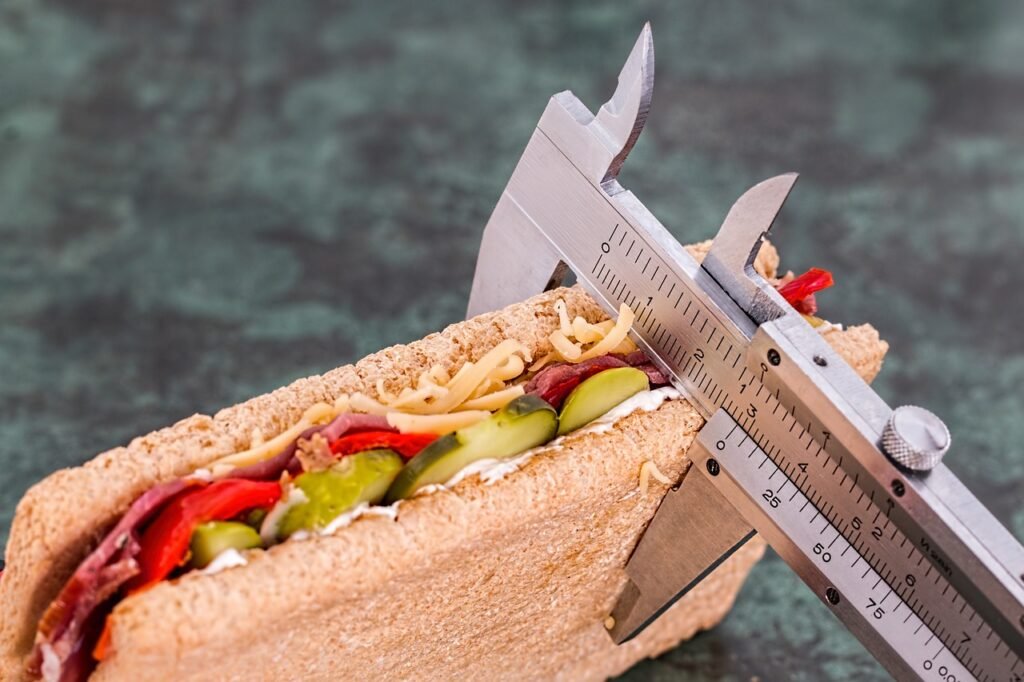In the world of health and fitness, diet trends come and go, but few have garnered as much attention as the Paleo diet. With its emphasis on whole foods, natural ingredients, and mimicking the dietary patterns of our Paleolithic ancestors, the Paleo diet is often touted as a natural solution for weight loss and overall health improvement. But does it work? How does it compare to other diet plans, and what should you know before embarking on this journey?
This comprehensive guide will explore the Paleo diet’s principles, its role in weight loss, potential benefits, and challenges, as well as practical tips for adopting it into your lifestyle.
Table of Contents
- What is the Paleo Diet?
- Origins and Philosophy
- Core Principles of the Paleo Diet
- The Science Behind Weight Loss on the Paleo Diet
- Caloric Deficit and Nutrient-Dense Foods
- Protein, Fat, and Satiety
- Insulin Regulation and Metabolic Health
- Key Benefits of the Paleo Diet for Weight Loss
- Reduction of Processed Foods
- High Protein Intake
- Improved Gut Health
- Hormonal Balance and Fat Storage
- Potential Challenges and Drawbacks
- Lack of Carbohydrates and Energy Levels
- Nutrient Deficiencies
- Sustainability Concerns
- Comparing the Paleo Diet to Other Popular Diets
- Paleo vs. Keto
- Paleo vs. Mediterranean Diet
- Paleo vs. Intermittent Fasting
- Practical Tips for Success on the Paleo Diet
- Meal Planning and Preparation
- Navigating Social Settings
- Staying Consistent for Long-Term Results
- Conclusion: Is the Paleo Diet Right for You?
1. What is the Paleo Diet?
Origins and Philosophy
The Paleo diet, short for Paleolithic diet, is based on the eating habits of our prehistoric ancestors. It emphasizes the consumption of foods that were available before the advent of agriculture approximately 10,000 years ago. The premise of this diet is that our bodies are genetically adapted to the hunter-gatherer lifestyle, and that many modern health problems, including obesity, stem from the consumption of processed foods and grains that our ancestors didn’t eat.

This “ancestral” way of eating seeks to eliminate the foods introduced by modern agriculture and industrialization, such as grains, legumes, dairy, refined sugar, and processed oils.
Core Principles of the Paleo Diet
The Paleo diet is structured around several core principles, including:
- Whole, unprocessed foods: Focus on fruits, vegetables, lean meats, fish, nuts, and seeds.
- Elimination of grains and legumes: Foods like wheat, barley, rice, and beans are excluded.
- No refined sugar or processed foods: Only natural sweeteners like honey or fruit are allowed.
- Healthy fats: Encourages consumption of fats from natural sources like avocado, coconut oil, olive oil, and grass-fed animals.
- Moderate protein intake: Prioritizes protein sources such as grass-fed meat, free-range poultry, and wild-caught fish.
These dietary guidelines are designed to mimic the types of food that would have been available to our hunter-gatherer ancestors, theoretically promoting better health, improved digestion, and weight loss.
2. The Science Behind Weight Loss on the Paleo Diet
One of the biggest reasons people turn to the Paleo diet is its purported ability to facilitate weight loss. While many factors contribute to weight loss, from metabolism to physical activity, the Paleo diet supports it in several scientifically-backed ways.
Caloric Deficit and Nutrient-Dense Foods
At the core of any effective weight loss strategy is the need for a caloric deficit, where you consume fewer calories than your body burns. The Paleo diet’s focus on whole, nutrient-dense foods (like fruits, vegetables, lean meats, and nuts) naturally helps reduce calorie intake without having to count them.
Since Paleo excludes calorie-dense processed foods and refined carbohydrates, it encourages a higher intake of filling, low-calorie vegetables and fruits that promote satiety without overeating. This can help reduce the total number of calories consumed each day.
Protein, Fat, and Satiety
Protein is a cornerstone of the Paleo diet, and this nutrient is particularly important for weight loss. A high-protein diet has been shown to increase feelings of fullness, reduce hunger, and enhance thermogenesis (the process of burning calories to digest food). This combination helps dieters consume fewer calories overall while boosting fat metabolism.
Additionally, the Paleo diet encourages the consumption of healthy fats, such as those found in avocados, nuts, and fatty fish. While high-fat diets might seem counterintuitive for weight loss, the right types of fat can actually aid in weight loss by promoting fullness and reducing unhealthy cravings.
Insulin Regulation and Metabolic Health
The Paleo diet excludes processed carbohydrates and refined sugars, which can lead to spikes and crashes in blood sugar levels. By focusing on low-glycemic foods like leafy greens and berries, the Paleo diet helps stabilize blood sugar and improve insulin sensitivity. Insulin is a key hormone that regulates fat storage; when it’s under control, it can reduce the likelihood of excess fat being stored in the body.
Furthermore, by improving insulin sensitivity, the Paleo diet may support metabolic health, making it easier for the body to burn fat as fuel.
3. Key Benefits of the Paleo Diet for Weight Loss
Reduction of Processed Foods
A hallmark of the Paleo diet is the elimination of processed foods, which are often high in empty calories, unhealthy fats, and refined sugars. Processed foods are linked to weight gain, inflammation, and metabolic syndrome. By focusing on whole foods, the Paleo diet promotes a more natural and sustainable way to manage weight.
High Protein Intake
As mentioned earlier, protein plays a crucial role in the Paleo diet. Since protein takes longer to digest than carbohydrates, it keeps you feeling fuller for longer, which can help reduce overeating and mindless snacking. Additionally, a high-protein diet is essential for preserving muscle mass while losing fat, ensuring that you lose weight in a healthy and sustainable way.

Improved Gut Health
The Paleo diet emphasizes fibrous vegetables, fruits, and fermented foods that support a healthy gut microbiome. A well-functioning gut is essential for digestion, nutrient absorption, and weight management. By eliminating processed foods and potential allergens like gluten and dairy, the Paleo diet can also reduce gut inflammation, which is associated with weight gain and difficulty losing fat.
Hormonal Balance and Fat Storage
The foods allowed on the Paleo diet can help regulate hormones such as leptin, which is responsible for hunger and fat storage. When your body’s hormonal balance is restored, it becomes easier to manage cravings, maintain energy levels, and store fat more efficiently, all of which contribute to weight loss.
4. Potential Challenges and Drawbacks
While the Paleo diet has its benefits, it also comes with challenges that can impact long-term sustainability and weight loss success.
Lack of Carbohydrates and Energy Levels
One common criticism of the Paleo diet is its restriction of carbohydrates, especially from grains and legumes. Carbohydrates are the body’s primary source of energy, and severely limiting them can lead to fatigue, difficulty performing high-intensity exercise, and even “Paleo flu”—a period of lethargy and brain fog as the body adjusts to the lack of carbs.
For some people, especially athletes or those with higher energy needs, the lack of carbohydrates may make the Paleo diet difficult to maintain.
Nutrient Deficiencies
By eliminating entire food groups, the Paleo diet can sometimes lead to nutrient deficiencies. For example, cutting out dairy may reduce calcium intake, while excluding grains could lower fiber and certain B vitamins. It’s important to ensure that you are getting these nutrients from other sources, such as leafy greens, nuts, and seeds, or through supplementation.
Sustainability Concerns
Maintaining the Paleo diet can be challenging due to its restrictions on common food groups and social eating. Dining out or attending social gatherings may become difficult as many modern dishes include grains, dairy, or processed ingredients. Additionally, the cost of eating organic, grass-fed, and free-range products, which are emphasized in the Paleo diet, can add up, making it less accessible for some people.
5. Comparing the Paleo Diet to Other Popular Diets
There is no one-size-fits-all approach to weight loss, and while the Paleo diet may work for some, others might find more success with different eating plans. Here’s how the Paleo diet compares to other popular diets:
Paleo vs. Keto
The ketogenic (keto) diet is another popular high-fat, low-carb eating plan, but it differs significantly from Paleo. While both diets restrict carbohydrates, the keto diet focuses on drastically reducing carbs to force the body into ketosis, where it burns fat for fuel. Keto is more restrictive when it comes to protein, and it allows dairy, which Paleo excludes.

For weight loss, both diets can be effective, but keto may promote faster fat burning due to ketosis. However, Paleo may be easier to maintain long-term due to its inclusion of more whole foods and moderate carbohydrate intake.
Paleo vs. Mediterranean Diet
The Mediterranean diet is considered one of the healthiest diets in the world and emphasizes fruits, vegetables, whole grains, lean proteins, and healthy fats like olive oil. It’s less restrictive than the Paleo diet, allowing legumes and grains, and promotes moderate alcohol consumption, typically red wine.
Both diets focus on whole foods and healthy fats, but the Mediterranean diet is generally viewed as more balanced and sustainable for long-term health. For weight loss, both diets can be effective, but the Paleo diet’s higher emphasis on protein may lead to quicker initial weight loss.
Paleo vs. Intermittent Fasting
Intermittent fasting (IF) is not a specific diet but rather an eating pattern that cycles between periods of eating and fasting. It can be combined with various diets, including Paleo. While the Paleo diet focuses on what to eat, intermittent fasting focuses on when to eat. Both approaches can lead to weight loss by reducing calorie intake, but IF allows for more flexibility in food choices.
For some people, combining intermittent fasting with the Paleo diet may offer enhanced benefits for weight loss by promoting fat burning during fasting periods while maintaining the nutritional benefits of Paleo.
6. Practical Tips for Success on the Paleo Diet
For those ready to adopt the Paleo diet for weight loss, here are some practical tips to ensure success:
Meal Planning and Preparation
Meal planning is key to staying on track with the Paleo diet. Preparing meals in advance can help you avoid the temptation of processed foods, especially when you’re short on time or faced with limited options.
- Create a weekly meal plan with simple, whole-food ingredients.
- Batch cook meals and freeze portions for easy access.
- Keep Paleo-friendly snacks like nuts, seeds, and fruit on hand.
Navigating Social Settings
Social events can be tricky when following the Paleo diet. Here’s how to handle dining out or attending parties:
- Research menus ahead of time to find Paleo-friendly dishes.
- Don’t hesitate to ask for modifications, like replacing grains with extra vegetables.
- Bring your own dish to potlucks to ensure you have a compliant option.
Staying Consistent for Long-Term Results
Like any diet, consistency is key to seeing long-term results. While the Paleo diet can help with initial weight loss, it’s important to make it a sustainable lifestyle rather than a short-term fix.
- Focus on balance and flexibility—occasional indulgences won’t derail your progress.
- Find Paleo recipes that you genuinely enjoy to avoid food boredom.
- Stay physically active to complement your diet and support overall health.
7. Conclusion: Is the Paleo Diet Right for You?
The Paleo diet offers a unique approach to weight loss by focusing on whole, unprocessed foods, high protein intake, and reduced carbohydrate consumption. Its emphasis on nutrient-dense, natural foods can help with satiety, insulin regulation, and fat loss. However, it’s not without its challenges, including its restrictive nature and potential nutrient deficiencies.

Whether or not the Paleo diet is right for you depends on your individual goals, lifestyle, and how well you can adapt to its principles. For many, it can serve as an effective tool for weight loss, especially when combined with regular exercise and a balanced, sustainable approach to healthy living.
Before starting any new diet, it’s always a good idea to consult with a healthcare professional to ensure it aligns with your nutritional needs and health objectives.


